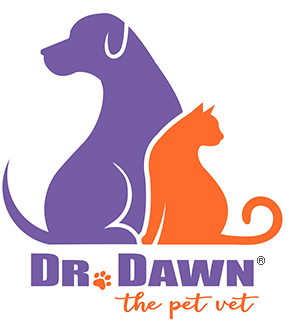You may have heard in the news lately about an outbreak of dog flu in the Chicago area. There has been some misreporting about the actual numbers of dogs infected, and that have died of the disease. Still, it is an outbreak, nonetheless, posing health risks to the dogs in the area. I thought it timely to talk about it, and what you need to know as a dog parent.
What is Canine Influenza: It is an H3N8 virus, which was first diagnosed in the U.S. in 2004, in racing greyhounds in Florida. It is a mutation of a horse flu virus, and cannot affect humans. Since first seen, it has been seen in sporadic outbreaks in 25 states. Outbreaks last, typically, only a few weeks.
In Chicago, 35-40 dogs have been confirmed with the disease. The testing that is required needs to be done within an early window of time after the dog shows signs, so it can make it hard to prove if not seen and tested in time. There are two types of tests available, and the preferable test is a nasal swab. Another is a blood titer, taken early, and then a few weeks later, to prove if exposed, and if resolving blood levels of antibodies are noted.
 What happens to the sick dogs? The virus is extremely contagious. 20-50% of the dogs exposed will not show signs of illness. The other 50-80% will get flu symptoms, which are mainly upper respiratory: fever, lethargy, coughing and a nasal discharge. A smaller percent of those dogs will get pneumonia, and an even smaller % (5-8) can die of the disease. The dogs with pneumonia should be hospitalized with more aggressive therapy than what can be done at home.
What happens to the sick dogs? The virus is extremely contagious. 20-50% of the dogs exposed will not show signs of illness. The other 50-80% will get flu symptoms, which are mainly upper respiratory: fever, lethargy, coughing and a nasal discharge. A smaller percent of those dogs will get pneumonia, and an even smaller % (5-8) can die of the disease. The dogs with pneumonia should be hospitalized with more aggressive therapy than what can be done at home.
Compared to kennel cough dogs, these dogs may seem more lethargic, are less likely to want to eat, and may have a very thick discharge. It is very difficult to distinguish the 2 diseases, and so you should definitely see your vet if your dog is coughing. Chest radiographs might be recommended to rule out pneumonia. Dogs that are sick are treated with antibiotics because of the secondary bacterial infections that set in to the lungs which have been damaged by the virus.
Vaccines? There are 2 vaccines available. They do not prevent the disease, unfortunately. They do decrease the severity of the clinical signs and duration of the disease. Outbreaks are not that common, and not nearly as prevalent as some of the diseases that we typically recommend, that are part of the “core” vaccines. If there is an outbreak, the vaccines need to be given as a series of 2, 1-2 weeks apart, if never vaccinated. So, often by the time the vaccine series has been given, and the dog has boosted his response, it may be too late to protect.
Some veterinarians do vaccinate, on the chance that there other outbreaks. Talk to your vet about it. Dogs that are at greater risk, in the face of an epidemic, are those that travel a lot. Dogs that are in kennels often, day care, and dog parks are more at risk. The vaccine does not have to be altered each year, like human flu vaccines, due to a slower rate of mutation in the dog virus. The kennel cough vaccine does not protect against canine influenza.
Transmission: The virus is shed in body secretions, whether or not the dog appears to be sick. It can be carried on people’s clothing, toys, bowls, collars, and leashes for several days. If exposed, they will show signs in 2-5 days, and the course of infection is 2-4 weeks.
Dr. Dawn
Please share and subscribe here





